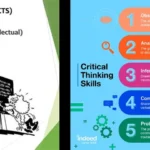Discover the Secrets: What Are the Five Pillars of Self Awareness?:Are you ready to embark on a journey of self-discovery and personal growth? If so, understanding the five pillars of self-awareness is your essential first step. In this blog post, we will delve into the foundation of self-awareness and explore the stages of its development. We will then uncover the five pillars of self-mastery and provide you with a strategic approach to achieving your goals. But that’s not all – we’ll also reveal the three pillars of self-empowerment and how to apply them in your daily life. So, get ready to unlock your true potential and integrate self-awareness into every aspect of your life. Let’s dive in and discover what these five pillars are all about!
The Foundation of Self-Awareness: Understanding the Five Pillars
Self-awareness is a multifaceted concept that influences how we see ourselves and interact with the world. It’s the foundation upon which personal development is built. The journey to deep self-understanding begins by exploring the five pillars of self-awareness: the body, mind, feelings, emotions, and thoughts.
The Body: The Physical Pillar
Our bodies are the vessels that carry us through life, and understanding this pillar is about tuning into the physical experiences that influence our behaviors and decisions. Being aware of your body means recognizing physical cues, such as stress, hunger, or fatigue, and understanding how these signals can affect your emotional and mental states.
- Listen to Your Body: Take note of physical sensations and acknowledge how they might be linked to your feelings and actions.
- Health and Wellness: Prioritize taking care of your physical needs through proper nutrition, exercise, and rest, as these directly impact your overall self-awareness.
The Mind: The Intellectual Pillar
The mind is our center of logic and reasoning. Engaging with this pillar involves recognizing patterns in your thoughts and understanding how they shape your perception of reality.
- Critical Thinking: Challenge your own beliefs and assumptions to foster a more objective viewpoint.
- Mental Health: Cultivate a healthy mental space by practicing mindfulness and seeking growth opportunities.
Feelings and Emotions: The Emotional Pillars
Feelings and emotions are often used interchangeably, but they serve different functions in self-awareness. Feelings are the subjective experience of emotions, which are complex psychological states triggered by thoughts and memories.
Feelings: Your Personal Compass
Feelings are your immediate reactions to situations or events. They inform you about your personal likes and dislikes, guiding you towards what feels right.
- Notice your immediate reactions to different scenarios and acknowledge them without judgment.
- Explore what these feelings reveal about your personal values and desires.
Emotions: The Deeper Current
Emotions are deeper and often sustained responses that can influence your long-term behavior.
- Emotional Intelligence: Enhance your understanding of your emotional responses and their impact on your actions.
- Emotion Regulation: Develop strategies to manage intense emotions and maintain emotional balance.
Thoughts: The Conceptual Pillar
Thoughts encompass the beliefs, ideas, and attitudes that occupy your mind. They are the narrative you tell yourself about who you are and how the world works.
- Thought Patterns: Identify recurring thoughts and consider how they influence your feelings and behavior.
- Mindfulness: Practice being present and aware of your thought processes without getting swept away by them.
Stages of Self-Awareness Development
Developing self-awareness is a progressive journey that unfolds through various stages. These stages are differentiation, situation, identification, permanence, and self-consciousness or meta-self-awareness, and they align with different aspects of personal growth such as self-control, self-awareness, self-sufficiency, self-efficacy, and self-discipline.
Differentiation: The Birth of Self-Control
Differentiation marks the beginning of recognizing oneself as separate from the environment. This stage is about identifying individual preferences and dislikes, leading to the development of self-control.
- Take note of what sets you apart from others in your thoughts, feelings, and reactions.
- Learn to manage impulses and restrain actions that are not in alignment with your goals.
Situation: Gaining Self-Awareness
In the situation phase, you become more aware of your context and how it influences your behavior. This stage is crucial for cultivating a deeper sense of self-awareness.
- Reflect on how different environments and situations affect your emotional state and thought patterns.
- Use this awareness to adapt and respond more effectively to the challenges you face.
Identification: Achieving Self-Sufficiency
Identification is about recognizing your abilities and relying on your strengths to navigate life. Self-sufficiency is developed as you trust in your capacity to handle life’s demands.
- Identify your competencies and areas of expertise that enable you to be self-reliant.
- Build upon these strengths to create a life that aligns with your values and aspirations.
Permanence: Cultivating Self-Efficacy
Permanence is the understanding that you have a consistent identity over time. This stage fosters self-efficacy as you gain confidence in your abilities and the belief that you can achieve your goals.
- Reflect on past successes and how they contribute to your current self-image.
- Set challenging yet achievable goals to reinforce your belief in your capabilities.
Self-Consciousness or Meta-Self-Awareness: Mastering Self-Discipline
Reaching self-consciousness or meta-self-awareness means you are not only aware of your traits and behaviors but also of how you are perceived by others. This stage is the pinnacle of self-discipline, where you can regulate your behavior based on both internal standards and external feedback.
- Seek feedback from trusted sources to understand how others view you.
- Integrate this information into your self-perception and make adjustments as needed to align with your personal and professional goals.
The Five Pillars of Self-Mastery
Self-mastery is an extension of self-awareness. It involves the traits of extraversion, openness, agreeableness, conscientiousness, and neuroticism, each playing a crucial role in shaping our interactions and growth.
Extraversion: The Social Pillar
Extraversion is about how you engage with others and the world. It influences your level of assertiveness, energy, and enthusiasm in social situations.
- Understand your comfort level in social settings and how it affects your personal and professional relationships.
- Work on balancing your social interactions with time for introspection to maintain a well-rounded sense of self.
Openness: The Pillar of Exploration
Openness reflects your willingness to consider new experiences, ideas, and perspectives. It’s a key aspect of personal growth and innovation.
- Challenge yourself to step outside your comfort zone and explore different viewpoints.
- Cultivate curiosity to remain open to learning and self-improvement.
Agreeableness: The Pillar of Harmony
Agreeableness is your capacity for cooperation and social harmony. It affects your ability to empathize with others and maintain positive relationships.
- Strive for understanding and compassion in interactions with others to foster trust and collaboration.
- Acknowledge the role of compromise in achieving mutual goals and maintaining peace.
Conscientiousness: The Organizational Pillar
Conscientiousness is about self-discipline, organization, and the pursuit of goal-directed behavior. It’s essential for turning insights into action.
- Develop routines and systems that support your personal and professional aspirations.
- Regularly assess and adjust your strategies to stay on track with your goals.
Neuroticism: The Emotional Stability Pillar
Neuroticism relates to emotional stability and the tendency to experience negative emotions. Understanding this pillar can help with emotional regulation and resilience.
- Recognize your triggers for stress or anxiety and develop coping mechanisms.
- Seek balance through activities that promote mental well-being, such as meditation or counseling.
The Five Pillar Goals and Strategy for Execution
The ultimate aim of self-awareness is to live a fulfilling and purposeful life. This goal is encapsulated in the five pillar goals: career, money, love, purpose, and enthusiasm. To actualize these goals, a five pillar strategy for execution is employed, consisting of strategy, goals, projects, metrics, and people.
Implementing a Strategy for Career and Money
Develop a clear vision of your career path and financial objectives. Set specific, measurable goals and break them down into actionable projects. Use metrics to track progress and make data-driven decisions. Surround yourself with a supportive network that aligns with your aspirations.
Fostering Love and Purpose
Love and purpose are deeply personal aspects that require introspection and honest self-appraisal. Define what these mean to you and how they fit into your life. Create goals that reflect your values and use projects to bring them to fruition. Measure success by the quality of your relationships and the impact of your contributions.
Cultivating Enthusiasm
Enthusiasm is the energy that fuels all endeavors. Align your strategy with activities that ignite your passion. Set goals that excite you and undertake projects that challenge and stimulate. Assess your level of enthusiasm as a key metric for engagement, and collaborate with people who share your zest for life.
Applying the Three Pillars of Self-Empowerment
Beyond self-awareness, self-empowerment is about harnessing the power of self-awareness, self-compassion, and self-mastery to live authentically and effectively.
Self-Awareness: The Key to Empowerment
Understanding your VITALS—Values, Interests, Temperament, Activities, Life Mission, and Strengths—is the first step towards empowerment. These elements shape your identity and guide you towards fulfilling experiences.
Self-Compassion: The Heart of Empowerment
Be kind to yourself as you navigate the complexities of self-awareness. Practice self-compassion by acknowledging your imperfections and treating yourself with the same care you would offer a friend.
Self-Mastery: The Apex of Empowerment
Self-mastery is about taking control of your life through disciplined action. It’s the culmination of self-awareness and self-compassion, where you build a life that reflects your true self.
Conclusion: Integrating Self-Awareness into Daily Life
Self-awareness is a continuous journey, not a destination. It’s about integrating the five pillars—body, mind, feelings, emotions, and thoughts—into every aspect of your life. It requires commitment to the stages of self-awareness development and the cultivation of traits that lead to self-mastery. By setting clear goals and employing strategic execution, you can live a life marked by career success, financial stability, love, purpose, and enthusiasm. Remember, self-awareness is the cornerstone of a life well-lived, and with each step of awareness, you empower yourself to create a more meaningful and fulfilling existence.
FAQ & Common Questions about the Five Pillars of Self Awareness
Q: What are the three pillars of self-awareness?
A: The three pillars of self-awareness are Self-Awareness, Self-Compassion, and Self-Mastery.
Q: What are the six aspects of self-awareness?
A: The six aspects of self-awareness are Values, Interests, Temperament, Activities, Life Mission, and Strengths, which can be remembered using the acronym VITALS.
Q: What are the pillars of self-knowledge?
A: The pillars of self-knowledge are knowing your values, passions, aspirations, fit, patterns, reactions, and impact. These seven pillars lead to self-awareness.
Q: What are the four strategic pillars?
A: The four strategic pillars are Visioning, Setting of Objectives, Resource Allocation, and Prioritization. These pillars are essential in corporate strategy.
Q: What are the key dimensions of self-awareness?
A: The key dimensions of self-awareness are physical, emotional, social, mental, and spiritual. These dimensions provide a holistic understanding of oneself.





